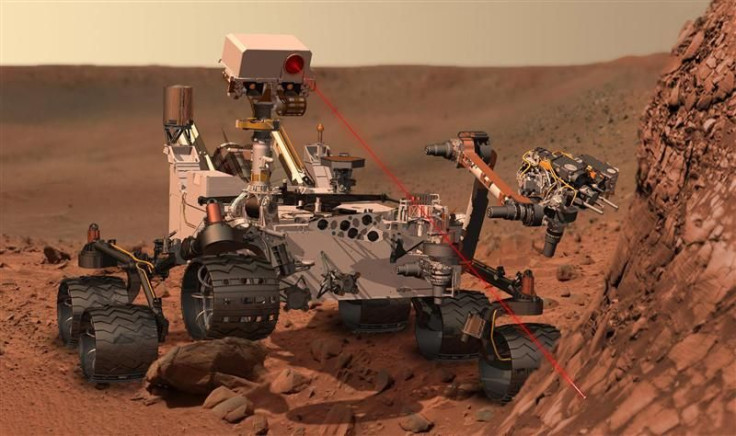NASA Rover Launched to Seek Life on Mission to Mars

An unmanned Atlas 5 rocket blasted off from Cape Canaveral Air Force Station in Florida on Saturday, launching a $2.5 billion nuclear-powered NASA rover toward Mars to look for life habitats there.
The 20-story-tall booster built by United Launch Alliance lifted off from its seaside launch pad at 10:02 a.m. EST, soaring through partly cloudy skies as it headed into space to send NASA's Mars Science Laboratory on a 354 million-mile (556 million-kilometer), nearly nine-month journey to the Red Planet.
The car-sized rover is expected to touch down next Aug. 6 to begin two years of detailed analysis of a 96-mile (154-kilometer) wide impact basin near the Martian equator called Gale Crater.
Scientists chose the landing area because it has a three-mile (4.8-kilometer) high mountain of what appears from orbital imagery and mineral analysis to be layers of rock piled up like the Grand Canyon, each layer testifying to a different period in Mars' history.
Nicknamed Curiosity, the rover has 17 cameras and 10 science instruments, including chemistry labs, to identify elements in soil and rock samples to be dug up by the probe's drill-tipped robotic arm.
The base of the crater's mountain has clays, evidence of a prolonged wet environment, said planetary scientist John Grotzinger of the California Institute of Technology and the mission's lead scientist.
Water is considered to be a key element for life, but not the only one. Previous Mars probes, including the rovers Spirit and Opportunity, searched for signs of past surface water.
With Curiosity, which is twice as long and three times heavier than its predecessors, NASA shifts its focus to look for other ingredients for life, including possibly organic carbon, the building block for life on Earth.
It's a long shot, but we're going to try, Grotzinger told reporters before launch.
Curiosity is powered by heat from the radioactive decay of plutonium. It is designed to last one Martian year, or 687 Earth days.
(Editing by Pascal Fletcher and Philip Barbara)
© Copyright Thomson Reuters 2024. All rights reserved.






















